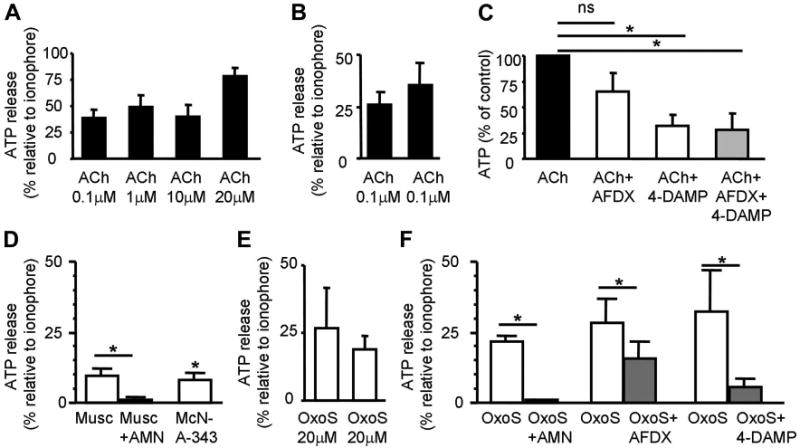Fig. 8.

Activation of mAChR triggers release of ATP. A: ACh evokes release of ATP. Results are expressed as percentage of the ATP released by the ionophore ionomycin (5 μM); n = 6, 3, 5, 3 for each concentration, respectively. B: repeatability of ACh (0.1 μM)-evoked ATP release (n = 3). C: ACh (0.1 μM)-evoked ATP release is reduced by the M2, M3 mAChR antagonists AF-DX 116 (50 μM, n = 3), 4-DAMP (50 μM, n = 3), and by both antagonists applied together (n = 4). Cells were pretreated with antagonists 10–20 min before agonist application. D: muscarine (10 μM, n = 4) induces ATP release which is blocked by AMN (20 μM). The M1 agonist MCN-A-343 (1 μM, n = 3) induces ATP release. E: repeatability of oxotremorine sesquifumarate salt (OxoS; 20 μM)-evoked ATP release (n = 6). F: OxoS (20 μM)-evoked ATP release from cultured urothelial cells is greatly reduced by AMN (20 μM, n = 3) and only partially reduced by the M2 and M3 mAChR antagonists AF-DX 116 (1 μM, n = 3) and 4-DAMP, respectively. *Statistically significant differences (P < 0.05) tested with unpaired t-test (C) and paired t-test (B, D, E, F). n Represents number of coverslips.
